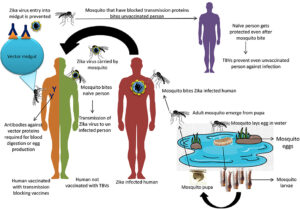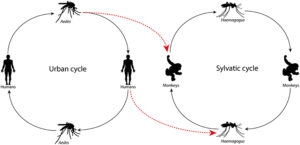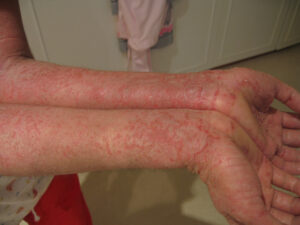Eating disorders are complex conditions that affect millions of people worldwide. Among these, Pica stands out as one of the most unusual and least understood. Pica is characterized by the persistent consumption of non-food items, which can pose significant health risks to those who suffer from it. While the exact causes remain unclear, understanding this disorder is crucial for early diagnosis and effective treatment.

What Is Pica?
Pica is an eating disorder where individuals repeatedly consume substances that have no nutritional value. These substances often include items such as dirt, chalk, paper, soap, hair, or even paint chips. Unlike typical cravings experienced during pregnancy or childhood, the behavior associated with this condition persists over time and cannot be attributed to cultural practices or developmental stages.
The name “Pica” originates from the Latin word for magpie, a bird known for its indiscriminate eating habits. This comparison highlights how individuals with this condition seem to lack selectivity when choosing what they put into their mouths.
Common Substances Consumed
- Dirt and clay
- Paper and cardboard
- Hair and wool
- Chalk and plaster
- Metal objects like coins or nails
- Soap and detergent
- Cigarette ashes or cigarette butts
Symptoms and Diagnosis
Diagnosing this condition requires careful observation of behaviors and patterns. The Diagnostic and Statistical Manual of Mental Disorders outlines specific criteria for identifying this eating disorder. For a diagnosis to be made, the following must be present:
- Persistent eating of non-nutritive, non-food substances for at least one month.
- This behavior is inappropriate to the individual’s developmental level.
- The behavior is not part of a culturally supported or socially normative practice.
- If occurring in conjunction with another mental health disorder (such as autism spectrum disorder) or during a medical condition (such as pregnancy), it is severe enough to warrant independent clinical attention.
It is important to note that occasional curiosity about non-food items, especially in children, does not necessarily indicate the presence of this condition. However, when the behavior becomes compulsive and harmful, professional evaluation is necessary.
Potential Causes
The exact cause of this eating disorder remains unknown, but several factors may contribute to its development:
Nutritional Deficiencies
Some researchers believe that deficiencies in essential nutrients, such as iron or zinc, could trigger cravings for non-food items. For example, anemia caused by low iron levels has been linked to cravings for ice, dirt, or starch. Addressing these deficiencies through dietary changes or supplements may reduce symptoms in some cases.
Psychological Factors
Mental health conditions, including intellectual disabilities, autism spectrum disorder, schizophrenia, and obsessive-compulsive disorder, are often associated with this eating disorder. Individuals with these conditions may engage in repetitive behaviors, including consuming non-food items, as a way to cope with stress or anxiety.
Environmental Influences
Socioeconomic status and living conditions may also play a role. Studies suggest that individuals living in poverty or areas with limited access to nutritious food are more likely to develop this condition. Additionally, exposure to toxins, such as lead, may increase the likelihood of consuming non-food items.
Health Risks Associated with Pica
Consuming non-food items can lead to a wide range of physical and psychological complications. Some of the most common risks include:
Gastrointestinal Issues
Ingesting indigestible materials can cause blockages in the digestive tract, leading to abdominal pain, constipation, or even perforation of the intestines. Surgery may be required in severe cases to remove impacted objects.
Toxicity and Poisoning
Many non-food items contain harmful chemicals or heavy metals. For instance, eating paint chips containing lead can result in lead poisoning, which affects brain function and development, particularly in children. Similarly, consuming cleaning products or batteries can introduce toxic substances into the body.
Infections
Consumption of contaminated items, such as soil or feces, increases the risk of bacterial, viral, or parasitic infections. These infections can affect various organs and systems within the body, requiring medical intervention.
Dental Damage
Chewing on hard objects like rocks or metal can damage teeth and gums, leading to fractures, erosion, or infections. Over time, this can result in significant dental problems that require costly treatments.
Treatment Options
Treating this eating disorder involves addressing both the underlying causes and the behaviors themselves. A multidisciplinary approach is often necessary to achieve positive outcomes.
Medical Evaluation
The first step in treatment is conducting a thorough medical evaluation to identify any nutritional deficiencies or underlying health issues. Blood tests may reveal imbalances that need correction through dietary adjustments or supplementation.
Behavioral Therapy
Cognitive-behavioral therapy is commonly used to help individuals recognize and change unhealthy eating patterns. Therapists work with patients to identify triggers and develop alternative coping strategies. Positive reinforcement techniques may also be employed to encourage healthier choices.
Medication
In cases where this condition coexists with other mental health disorders, medications such as antidepressants or antipsychotics may be prescribed. These medications aim to stabilize mood and reduce compulsive behaviors.
Family and Community Support
Support from family members and caregivers is critical for recovery. Educating loved ones about the disorder helps them understand the challenges faced by the individual and equips them to provide appropriate support. Group therapy sessions and community programs can also offer valuable resources and encouragement.
Prevention Strategies
While preventing this condition entirely may not always be possible, certain measures can reduce the risk of its development:
- Ensuring access to a balanced diet rich in essential nutrients.
- Providing education about healthy eating habits, particularly for children and pregnant women.
- Creating safe environments free from hazardous materials that could tempt individuals to consume them.
- Monitoring and addressing signs of stress or anxiety early to prevent maladaptive coping mechanisms.
Special Considerations for Children and Pregnant Women
This eating disorder is relatively common among young children and pregnant women, making it essential to address unique considerations for these groups.
Children
In children, consuming non-food items is sometimes part of normal exploratory behavior. However, if the behavior persists beyond the age of two or three, it may indicate an underlying issue. Parents should consult a pediatrician if they notice their child consistently eating non-food items.
Pregnant Women
Pregnancy-related cravings for non-food items, such as ice or clay, are not uncommon. While occasional cravings do not necessarily indicate this condition, persistent consumption should be evaluated by a healthcare provider. Proper prenatal care, including nutritional counseling, can help manage symptoms and ensure the health of both mother and baby.
Raising Awareness and Reducing Stigma
Despite its prevalence, this eating disorder remains poorly understood by the general public. Misconceptions and stigma surrounding the condition can prevent individuals from seeking help. Raising awareness through education campaigns and open discussions can foster empathy and encourage early intervention.
Healthcare professionals, educators, and community leaders play a vital role in dispelling myths and providing accurate information. By promoting understanding, society can create a supportive environment for those affected by this challenging disorder.





